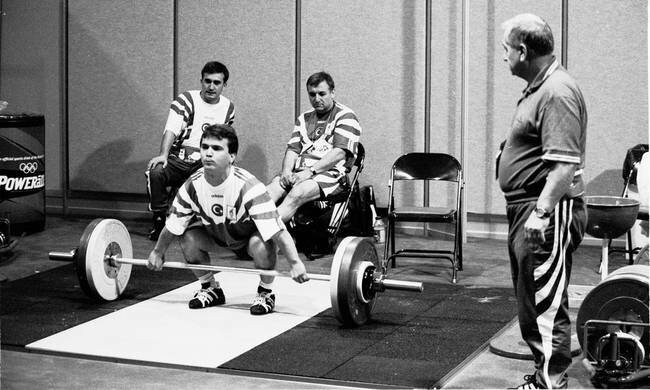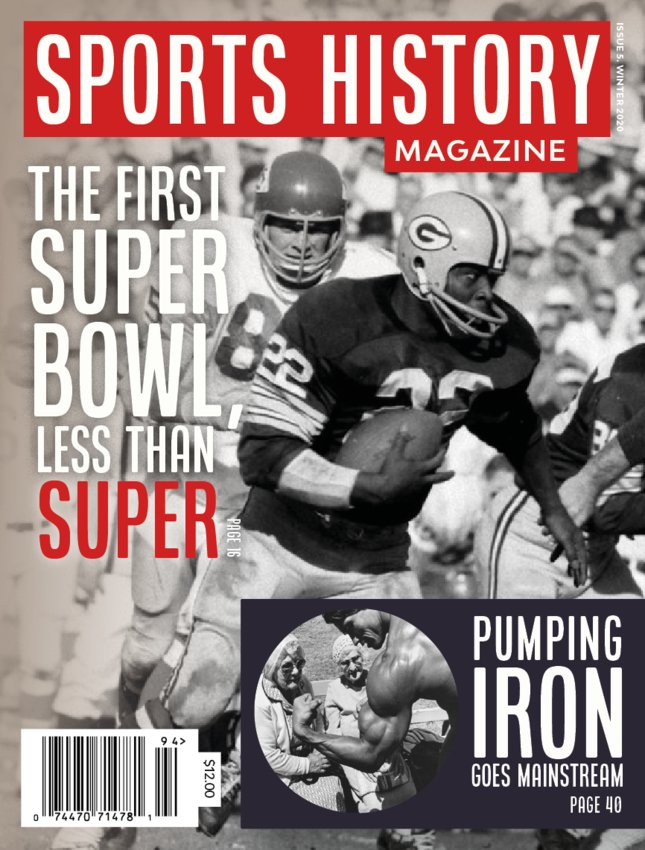A Revolution in Olympic Weightlifting
'The Bulgarian Method' ditches the old Soviet doctrine
How does a nation emerge from Olympic obscurity in a particular sport to become a gold medal winner several times over?
In the case of Bulgaria, it was a training revolution that launched the East European country to weightlifting supremacy.
Simple but groundbreaking at the time, the ‘Bulgarian Method’ ditched the old Soviet system of heavy lifting to embrace a new training philosophy that was so successful, it was later adopted by the rest of the world.
Ranked 4th on the Olympic weightlifting table behind the USSR, China and the U.S., Bulgaria today boasts 37 medals in the hoisting event: 12 gold, 17 silver, and 8 bronze.
BUY- 'Built From Broken' (Bestseller in Pain Management)
Prior to the 1972 Olympics in Munich, Bulgarian athletes never reached the podium in the barbell competition. But at the end of those Games, they would walk away with 3 gold and 3 silver accolades in the iron discipline.
In the years to come, they would ‘earn their weight’ in gold at every one of the quadrennial tournaments (except 1984) through 2004, and it was all due to a single man.
It was Ivan Abadjiev, a hard-driving maverick coach who changed the country’s weightlifting trajectory and in the process the sport itself.
Bulgaria was no stranger to Olympic glory. The Slavic nation had accumulated 32 medals in the decades leading to Munich, but 24 were in wrestling alone and none were in the bars.
A former competitor, Abadjiev became his country’s first weightlifting medalist when he took silver in the lightweight class at the 1957 Teheran World Championships.
As national coach in the late 1960s through the 1980s and in the latter part of the 1990s, Abadjiev produced 12 Olympic champions, 57 world champions, and 64 European champions.
Known early on as the ‘Butcher’ for his imperious ways and demanding workouts, he ended his career with the nickname ‘The Pope of Weightlifting’ and was elected Coach of the 20th Century by his country.
Up until the 1960s, the USSR dominated weightlifting with a doctrine that was basic, structured, and universally followed by the rest of the Soviet bloc countries.
Lifters worked out 3-4 times a week and rarely hoisted over 90% of capacity before the day of competition.
The conventional thinking was that athletes needed 48 hours to rest from heavy training and that more intensive workouts also led to greater incidents of injury.
Abadjiev challenged the existing regimen and argued that a different approach would beat their Soviet comrades.
BUY- Bigger Leaner Stronger' (International Bestseller)
He believed that the body built different muscle fibers and formed a different type of muscle memory when weightlifting at lower percentages. Therefore, an athlete was capable of driving iron harder than previously thought.
By the late 1960s, Bulgaria’s national team was lifting 3-4 times a day instead of 3-4 times a week. They were also pushing beyond 100% lifts during training, instead of saving the marginal weight for tournament days.
Repetitions, previously a standard practice, were also abandoned in favor of brute, single volume, maximum force.
Every training session also mimicked an official competition, so by the time athletes stepped in front of a panel of judges they benefitted from psychological as well as physical advantage.
The workouts were simple: snatch, clean & jerk, and squat. Water therapy, whirlpools, massages, proper diet, and adequate sleep were the principal remedies in the recovery period.
But the coaching hero wasn’t without his detractors. As early as 1959, he was criticized for organizing a National Teenage Weightlifting Championship when the general policy restricted the under-17 from engaging in heavy lifting.
By 1984, the national team was training as much as 7 sessions a day and when Abadjiev tried to increase it further, even his elite sportsmen rebelled.
But nobody could argue with the medals that were piling up.
BUY- 'How Squats Can Change Your Life'
Munich was the first successful international testing ground and soon enough Abadjiev began conquering the World Championships.
In the early 1980s, Bulgarian athletes claimed 9 medals at the Worlds. By 1985, 16 years after assuming the helm of the national weightlifting team, Abadjiev made good on his promise to defeat the mighty Russians.
At the 1985 Worlds, which were held in Södertälje, Sweden, Abadjiev’s warriors topped the charts with 26 medals (16 gold) versus Russia’s 25 (12 gold).
The feat was a remarkable David and Goliath story given that the USSR’s lifting machine had 340,000 registered weightlifters compared to Bulgaria’s 5,000.
One of the victorious hoisters in Sweden was 4’11” Naim Suleymanoglu, an ethnic Turk who was born and raised in Bulgaria.
Weighing only 62 kg (137 lbs), he won gold by lifting 142.5 kg in the snatch and pressing 180 kg in the clean & jerk. He was only 18 years old at the time.
A year later, Suleymanoglu defected to Turkey while competing in Melbourne, Australia and began representing his newly-adopted home in international competitions.
With a 3-year Olympic moratorium forbidding athletes from jumping countries, Turkey reportedly paid Bulgaria $1.25 million to waive that precondition.
As Abadjiev’s most successful protégé, Suleymanoglu would set numerous world records and claim first place at 3 consecutive Olympiads- 1988, 1992, 1996- and 7 World Championships.
BUY- 'Physique Secrets' (Kindle Bestseller in Quick Workouts)
In July, 1992, Sports Illustrated wrote about their relationship: “The coupling of this man and this small boy, these opaque eyes and these hungry eyes, created the greatest weightlifter, pound for pound, in history.”
At the 1996 Olympics in Atlanta, the diminutive Turk and his closest rival, Valerios Leonidis of Greece, traded 3 world record lifts in an epic little-men battle.
The match came down to Leonidis’ final attempt at 190 kg versus his competitor’s 187.5 kg. The Greek failed and Suleymanoglu was crowned Olympic champion for the 3rd time.
Today, Suleymanoglu remains the only weightlifter to have snatched 2½ times his bodyweight and the only athlete to clean & jerk 10 kilos more than triple his body weight.
A near-deity in his Turkish homeland, he was nicknamed the ‘Pocket Hercules’ for his small stature and for years was showered with all the gifts and adulations of a national hero.
BUY- 'Strength Training Anatomy' (Over 2 million copies sold)
As if by providential design, master and pupil who were synonymous with the sport died within months of each other: Abadjiev in March, 2017 at the age of 85, and Suleymanoglu in November, 2017 at the age of 50.
Convincing the world of his weightlifting principles, Abadjiev’s method became known around the world as ‘The Bulgarian Training System”.
While some continue to maintain that his approach was too harsh and perhaps even cruel, no one could deny the final results.
This article is based on the original submitted by Mark Morthier, author of ‘No Nonesense, Old School Weight Training: (a guide for people with limited time)’.
ENJOY OUR CONTENT? SIGN UP FOR OUR FREE WEEKLY NEWSLETTER AND SHARE ON YOUR SOCIAL MEDIA















